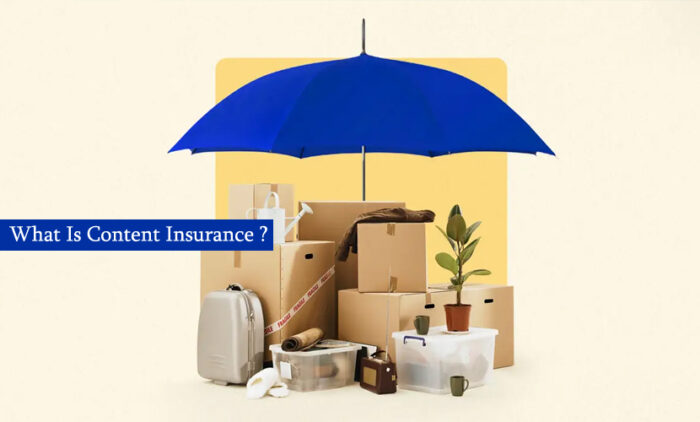Contents insurance is a type of insurance that protects personal belongings within a home, whether owned or rented.

It is known to cover items like furniture, electronics, clothing, and jewelry, safeguarding against damage or theft.
When selecting contents insurance, accurately assessing the sum insured is crucial, as this represents the maximum amount the insurer will pay out in the event of a claim.
Policies commonly include coverage for losses due to events such as fire, storm, theft, and vandalism, although exclusions like intentional damage may apply.
Understanding coverage limits, deductibles, and any additional benefits is important when choosing a policy.
Valuable items such as jewelry may have specific limits, and optional coverage for accidental damage or scheduled personal property can provide added protection.
Renters insurance, a form of contents insurance, is often more affordable and may extend coverage to accidental damage within the rented property and legal expenses for injuries on the premises.
Regularly reviewing and updating the sum insured ensures that personal belongings are adequately protected.
How Does It Work?
In the event of an unfortunate incident, such as a burglary, water damage, or fire, you can submit a claim to the insurance provider for any affected items.
The insurer will then evaluate whether your situation is covered and determine the amount of compensation to be provided.
Generally, you will be required to cover a portion of the claim yourself, known as an excess, which typically ranges from £50 to £1,000.
This amount is determined at the time of policy issuance and is your responsibility to pay in the event of a claim
What Does Contents Insurance Cover?
If you were to turn your home upside down, contents insurance typically covers all items that fall out, including fitted carpets.
However, the specific coverage may vary between insurers and policies. Generally, most policies will assist in covering repair or replacement costs due to:
- Theft.
- Fire.
- Flood.
- Loss.
Additionally, you have the option to pay extra for additional coverage, such as:
- Items lost or stolen outside of the home, including overseas.
- High-value items.
- Accidental damage.
What Does It Not Cover?
Most insurance policies do not cover certain items, such as:
- Normal wear and tear
- Deliberate damage.
- Damage to a computer caused by a virus.
In these cases, you would be responsible for funding the repairs yourself. Therefore, it’s advisable to open a savings account to help cover any unexpected emergency costs.
Obtaining Quotes For Contents Insurance
When seeking contents insurance quotes, it’s essential to gather multiple quotes, as insurers can offer varying prices. You have several options to obtain insurance quotes. They include:
- Utilize comparison sites where you can input your information once to receive quotes from numerous insurers.
- Consider reaching out to insurers directly, as not all may be listed on comparison platforms, such as Direct Line.
- Explore potential options through your council, local authority, or Housing Association, especially if you rent from them, as they might provide more cost-effective deals.
- Consult insurance brokers for tailored advice or policies to suit your needs.
It’s important to not compromise on coverage if feasible, as the cheapest option may not always be the most suitable.
Therefore, prioritize obtaining the right policy, even if it entails a slightly higher cost, especially if it aligns with your specific requirements.
Strategies To Obtain Affordable Contents Insurance Quotes
Insurers are required to charge both new and existing customers the same rates. But it’s always advisable to verify if you can save by switching providers. This helps to avoid the auto-renewal trap. Here are additional tips to secure cheaper quotes:
- Purchase buildings and contents insurance together if both are necessary.
- Opt for annual payments, as monthly installments typically incur higher costs.
- Increase the excess, which refers to the amount you’re willing to pay towards any claim.
- Enhance your home’s security by installing BSI-approved locks on doors and windows, burglar and smoke alarms, and joining a neighborhood watch scheme.
- Assess your existing coverage, as some packaged current accounts may include coverage for mobile phones and gadgets.
By implementing these strategies, you can potentially reduce the cost of your contents insurance quotes.
Frequently Asked Questions
What Is Unlimited Cover In Contents Insurance?
‘Unlimited cover’ in contents insurance refers to a policy feature that provides an unlimited amount of coverage for personal belongings within the home.
This means that there is no specific monetary limit on the amount that can be claimed for damaged, lost, or stolen items, offering comprehensive protection for a wide range of possessions.
Are My Jewelry Items And Watches Covered Under Content Insurance?
Yes, contents insurance typically covers valuable items like jewelry and watches. These items are considered part of the contents of the home and are protected against risks such as theft, damage, or loss.
However, it’s advisable to check the specific terms of your policy to ensure that these valuable possessions are adequately covered.
What Exactly Are Considered Contents In Contents Insurance Policies?
Contents in contents insurance policies refer to household items that are owned or used primarily for domestic purposes.
This includes furniture, clothing, home computers, appliances, curtains, carpets, plants, and medical equipment.
Items permanently attached to the home, like fixtures or fittings, are usually covered under buildings insurance rather than contents insurance.
Do Contents Insurance Policies Cover Items Lost Or Stolen Outside Of The Home?
Some contents insurance policies offer coverage for items lost or stolen outside of the insured address, including overseas.
This additional coverage can be beneficial for protecting personal belongings while traveling or in situations where possessions are not within the confines of the insured property.
It’s recommended to review the policy details to understand the extent of coverage for items outside the home.



